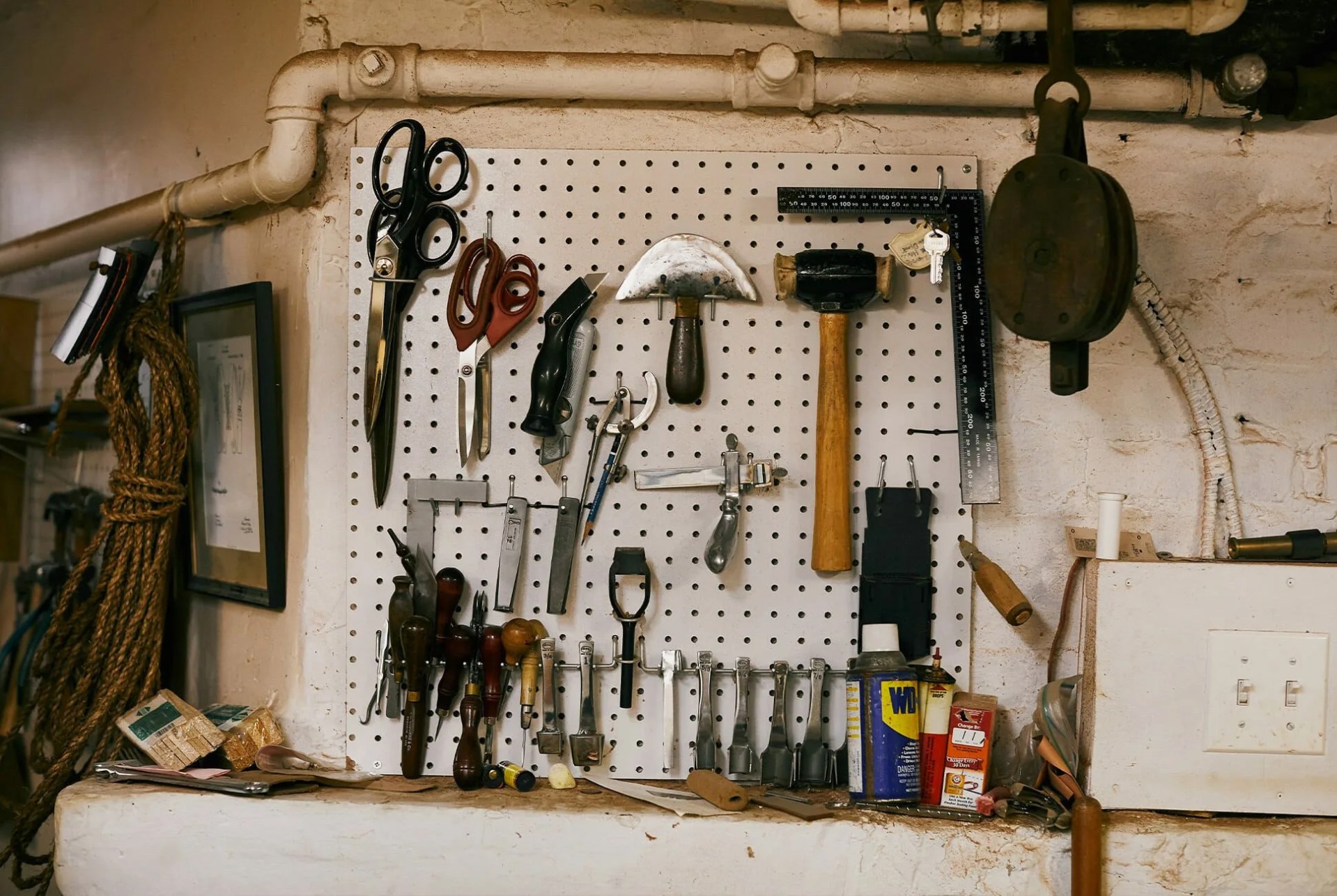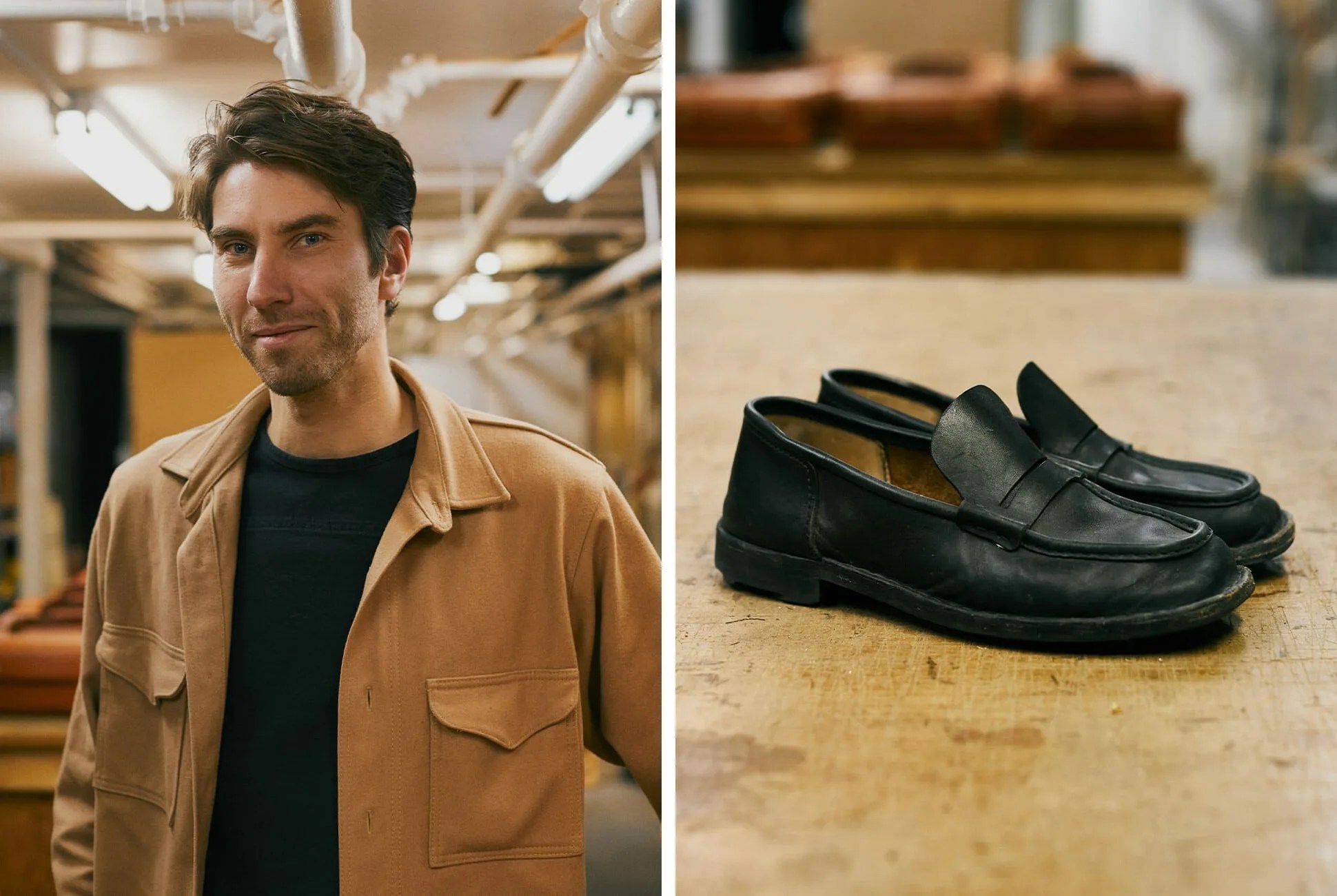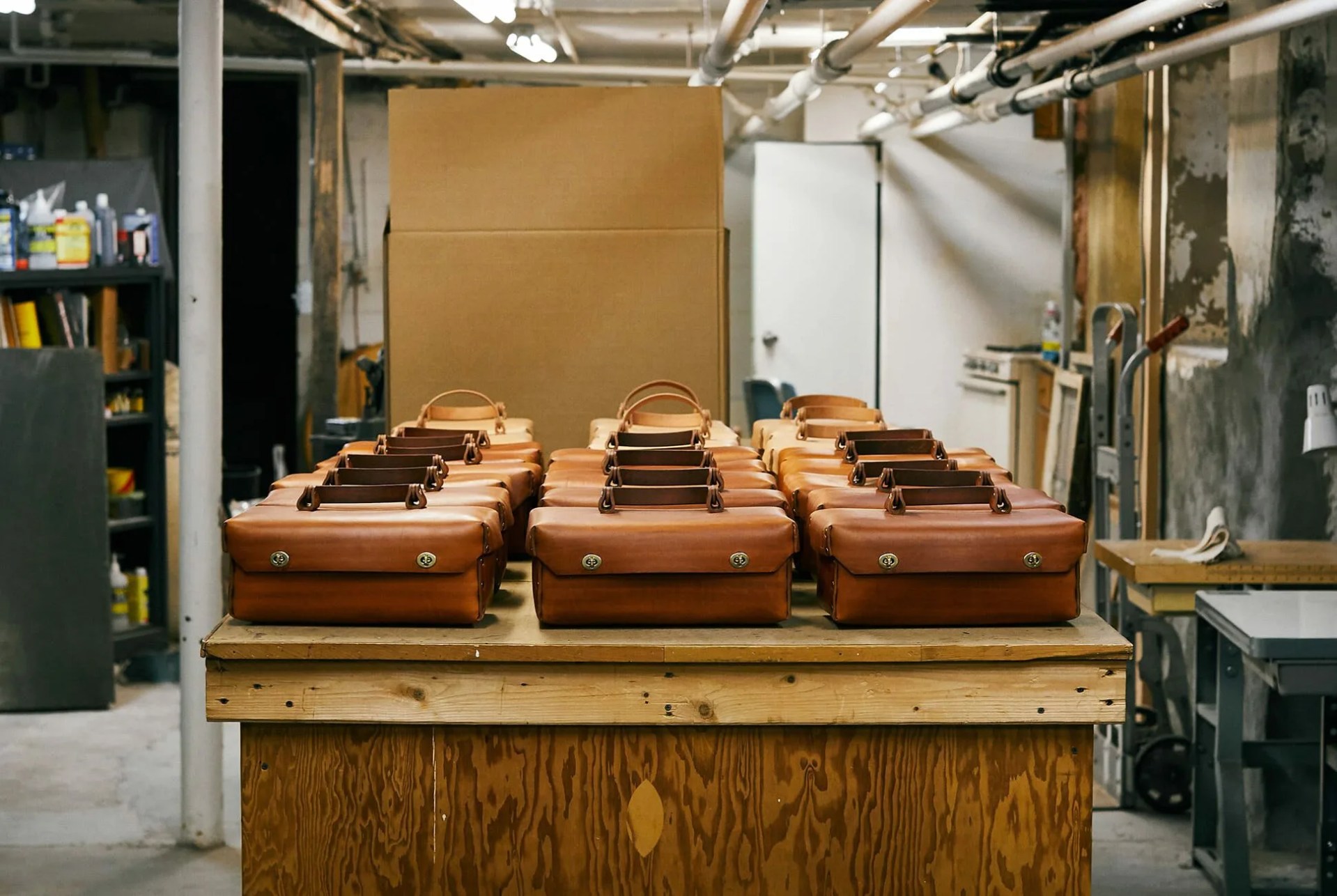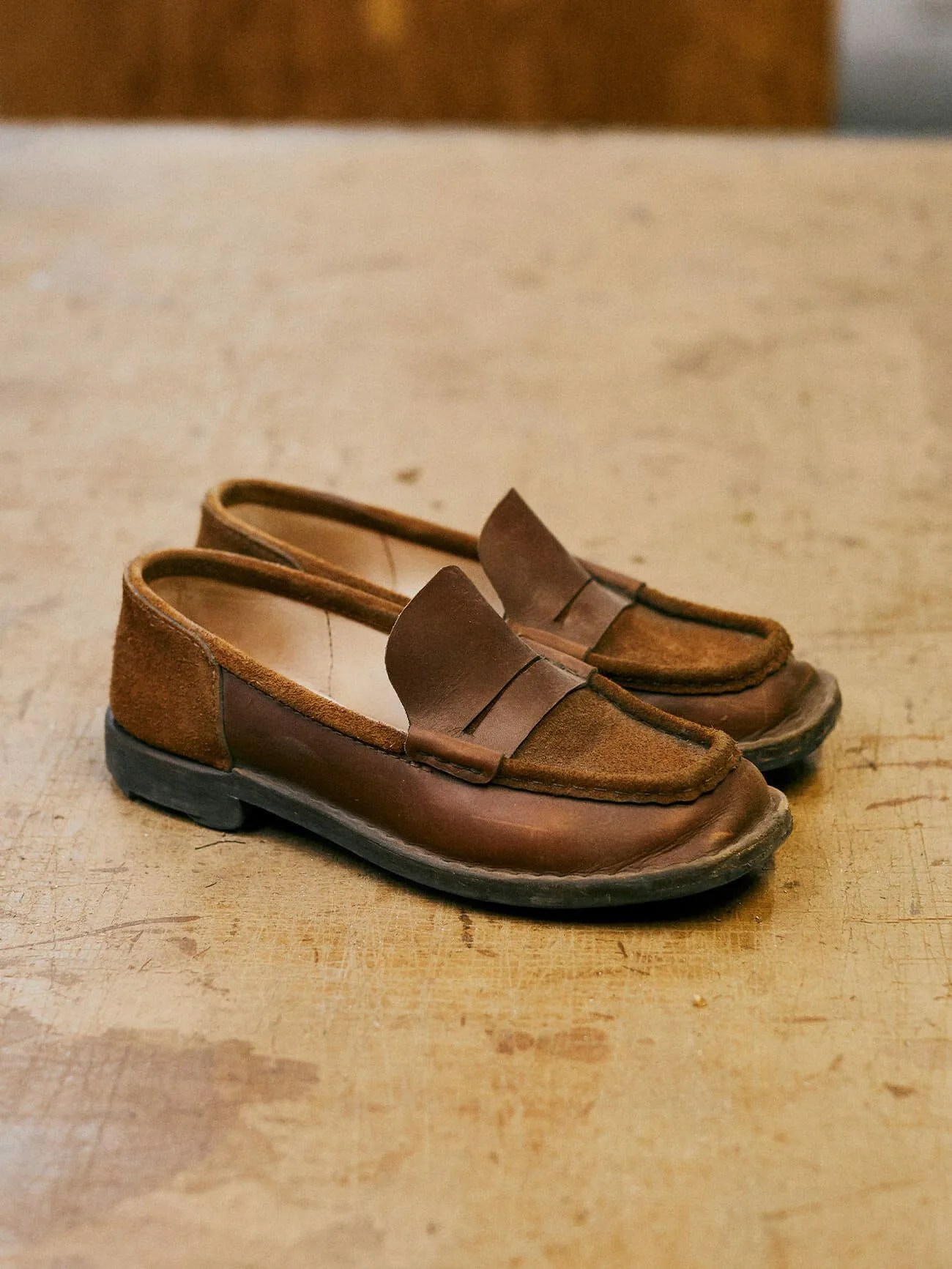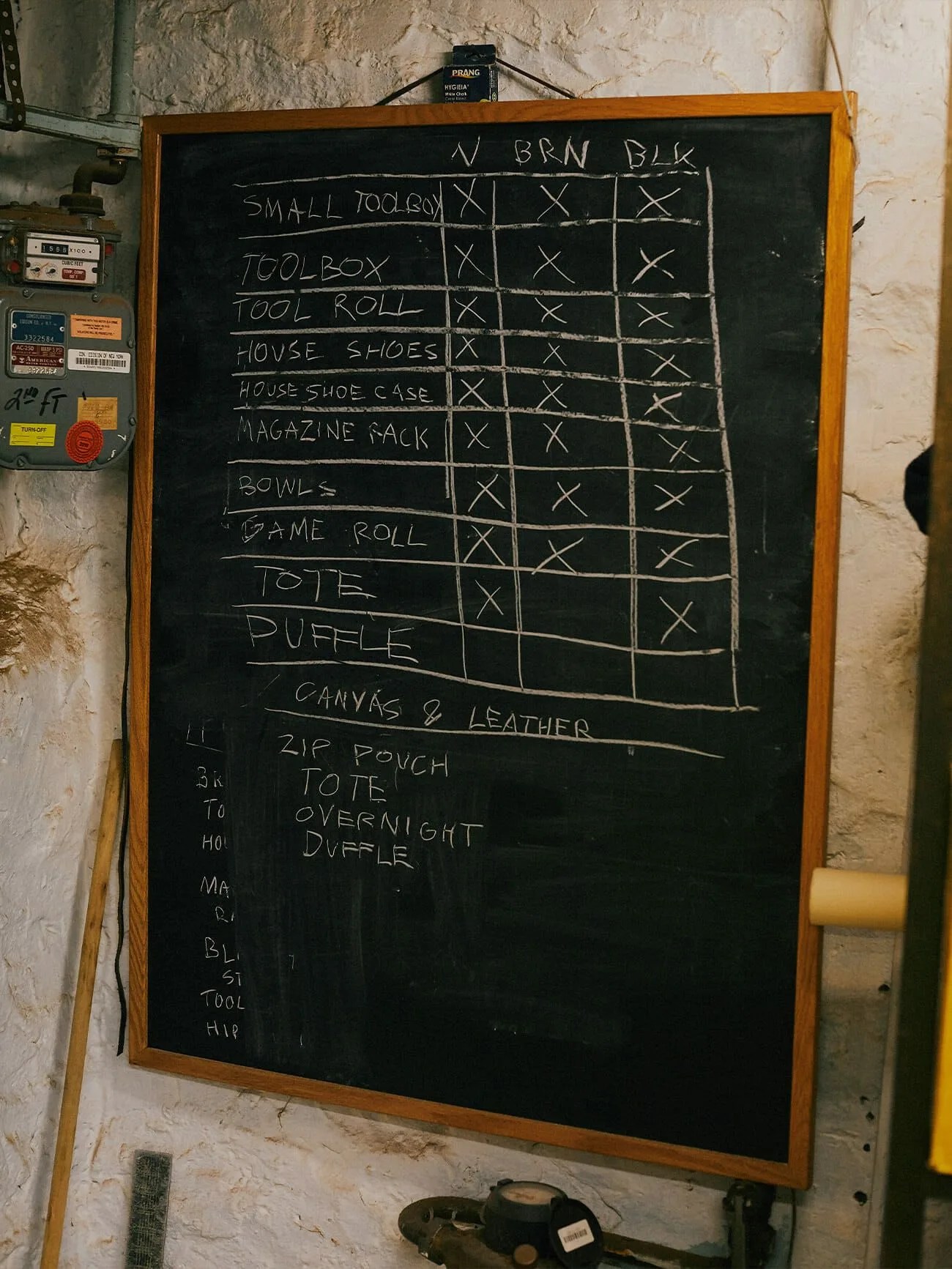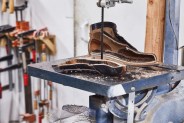“I’ll be right out,” I hear muffled somewhere nearby, then echoed through my phone. A door creaks open and I turn around to see Andrew McAteer emerging from basement stairs below to greet me on a quiet suburban street in Astoria, Queens. I follow him down the concrete stairs, careful of the low clearing into the studio space. Entering his basement-turned-studio, we’re able to straighten up, though the clearance is barely enough to accommodate the craftsman himself who stands a few inches above six feet.
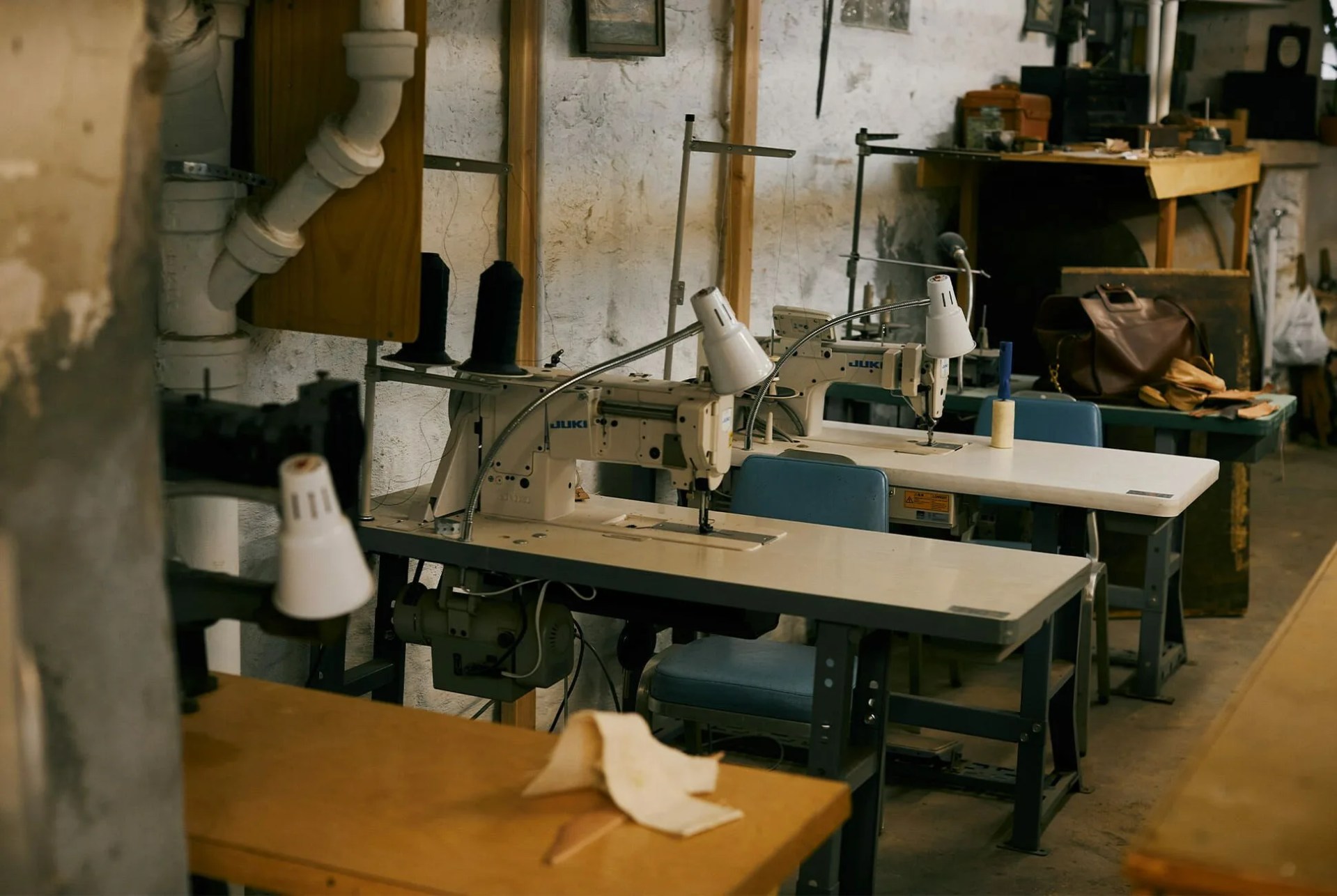
The space is an open corridor fixed with fluorescent lights that shine between metal pipes crawling overhead like ivy. Illuminated, iron sewing machines stand at attention, rank and file alongside clicking tables with scraps of leather stashed below. The wall opposite is lined with industrial shelves stocked with patinated tools and boxes filled with who-knows-what. It looks like a workshop for half a dozen craftspeople. In fact, the space previously housed a family. Now its sole occupant is McAteer. It was once segmented into rooms, but over the years working as the building’s superintendent, he’s taken down the walls one by one to reveal what would eventually be the A. E. McAteer studio as we were seeing it.
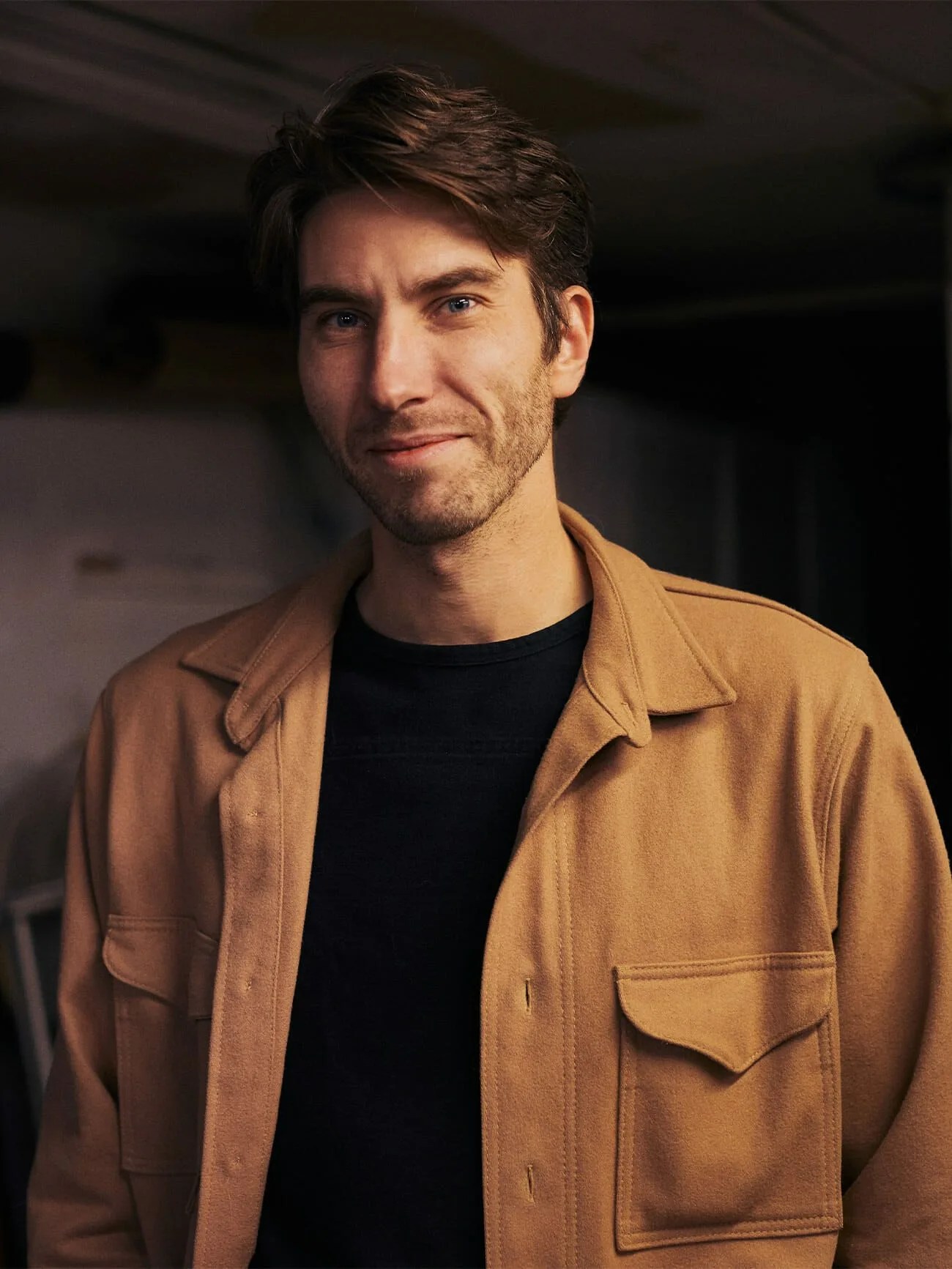
“It’s been an interesting journey, for sure,” McAteer says. “All of this just periodically happened. Every now again it’s been like, okay I’ve gotta take down another wall or pour some more concrete and put in more lights.”
McAteer is a New Yorker. Not the kind that claims the title after hitting their fifth year here, but the kind whose family has been here for five generations. His childhood home was built in the mid-1800s. It, along with the rickety wooden boat his family acquired later on, was always being fixed up. Between his father’s woodworking and his mother’s gardening, McAteer’s gained foundational home improvement skills that he would eventually use with his own leather goods brand.
